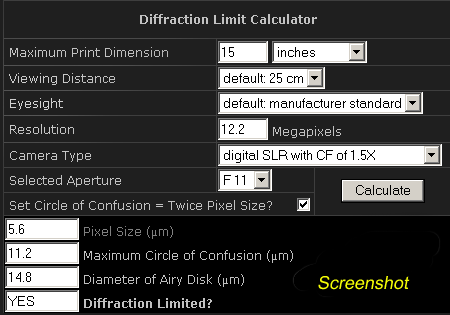brightcolours
Forum Pro
They are not. Using a silly "diffraction calculator" that thinks that is how it is done, is your own responsibility, but not in any way a correct way.Yes as they are variables in the Diffraction Limit calculationYou brought up print size and viewing distance,I never brought up DoF and as you can see...it is not a variable in the calculation of Diffraction Limit
Diffraction happens inside the lens, and gets recorded on sensor level. Viewing distance and print size never come into play.
Loading…
www.edmundoptics.com
Loading…
en.wikipedia.org
Again, viewing distance and print size and visual acuity are used to calculate the CoC for DOF assessment. They do not belong in a diffraction limit calculator.
and DoF is not a variable in that calculation. Apples and orangeswhich ARE about DOF and not about diffraction.
we are speaking about how the Diffraction Limit is derived (f9,3 in this case)...not how the DoF number is derivedExamples:


diffraction limit depends on the pinhole radius, ro. It is defined by the angle Δθ = t0λ/2πro where t0 = 3.832

